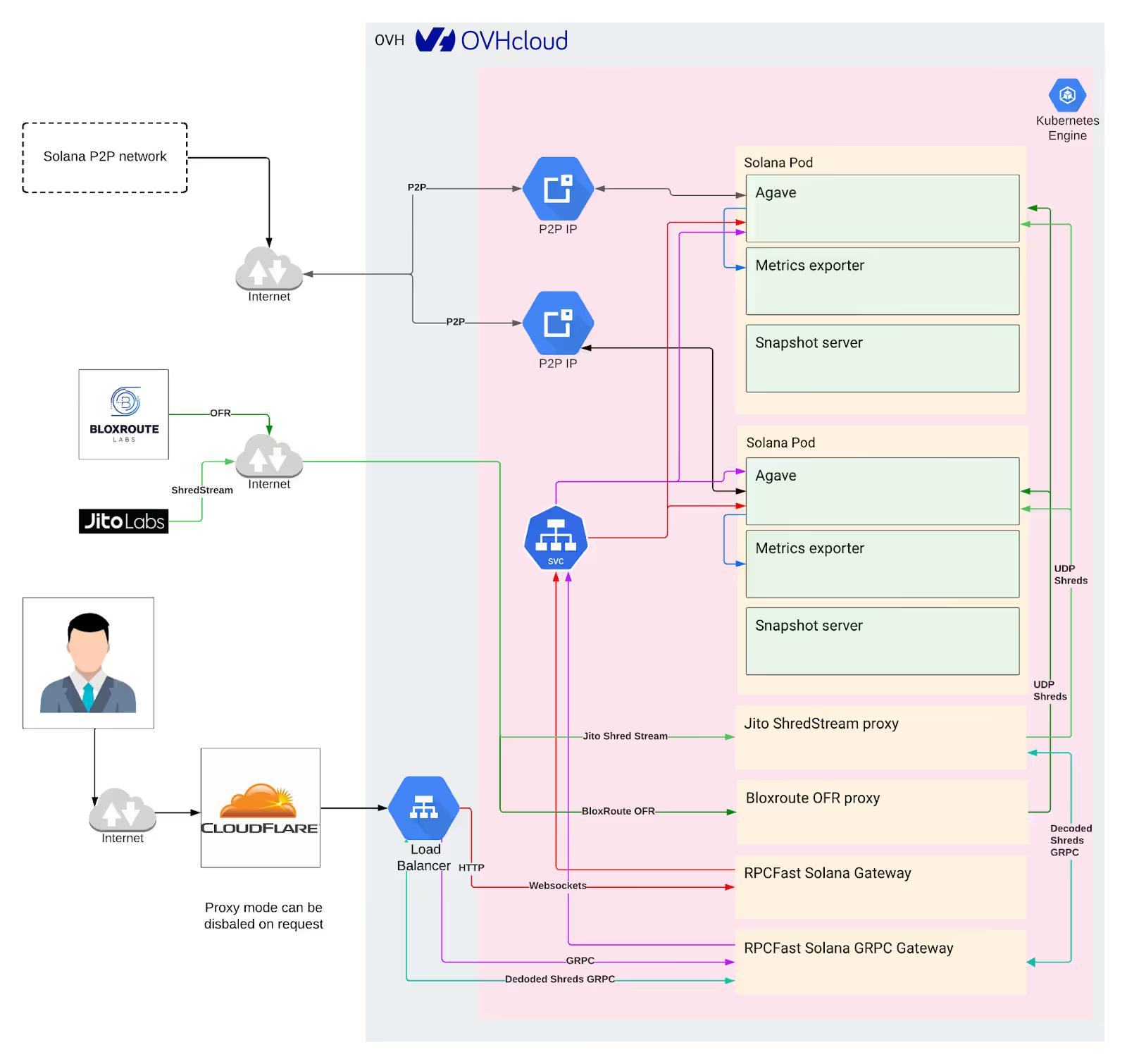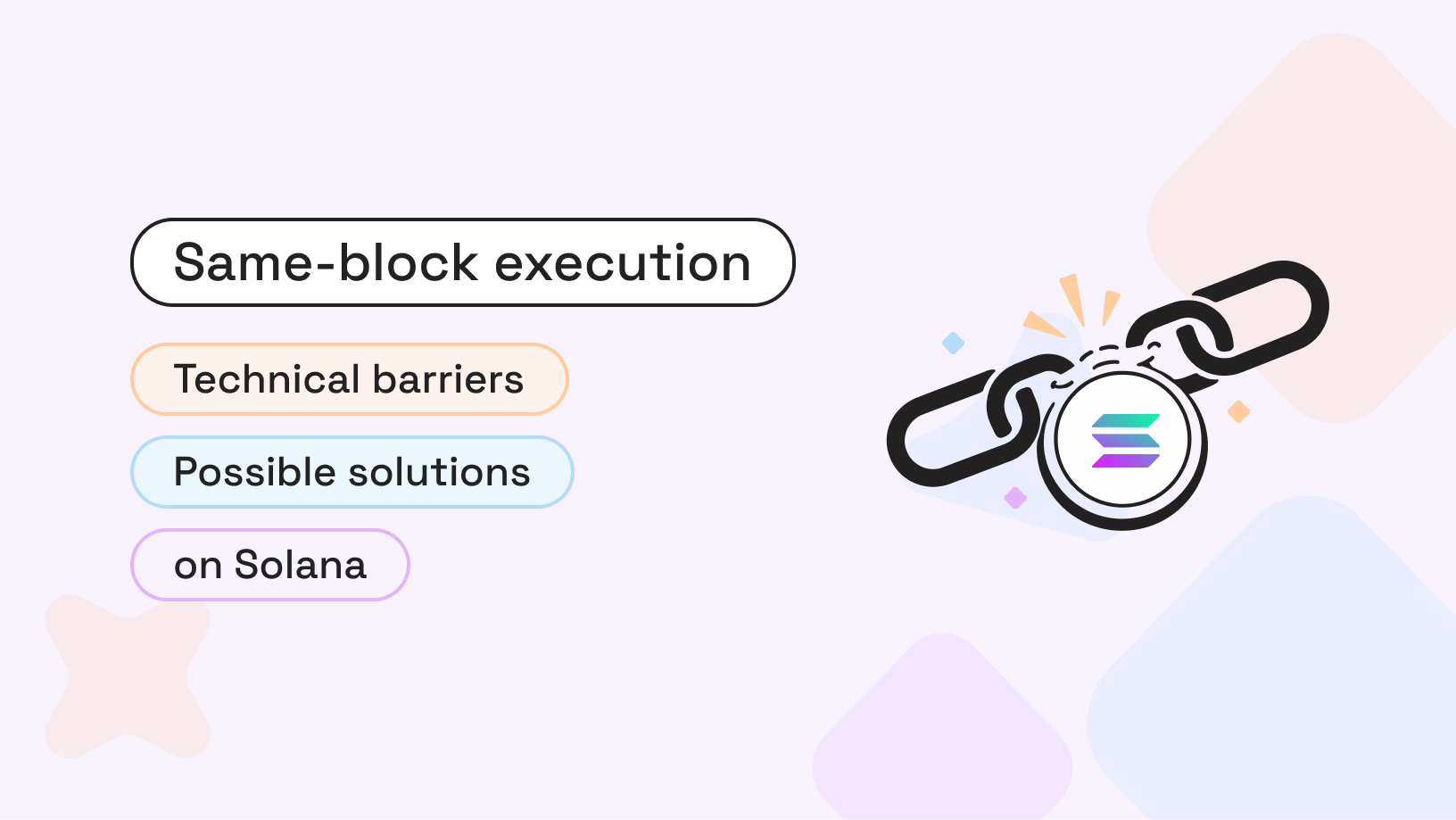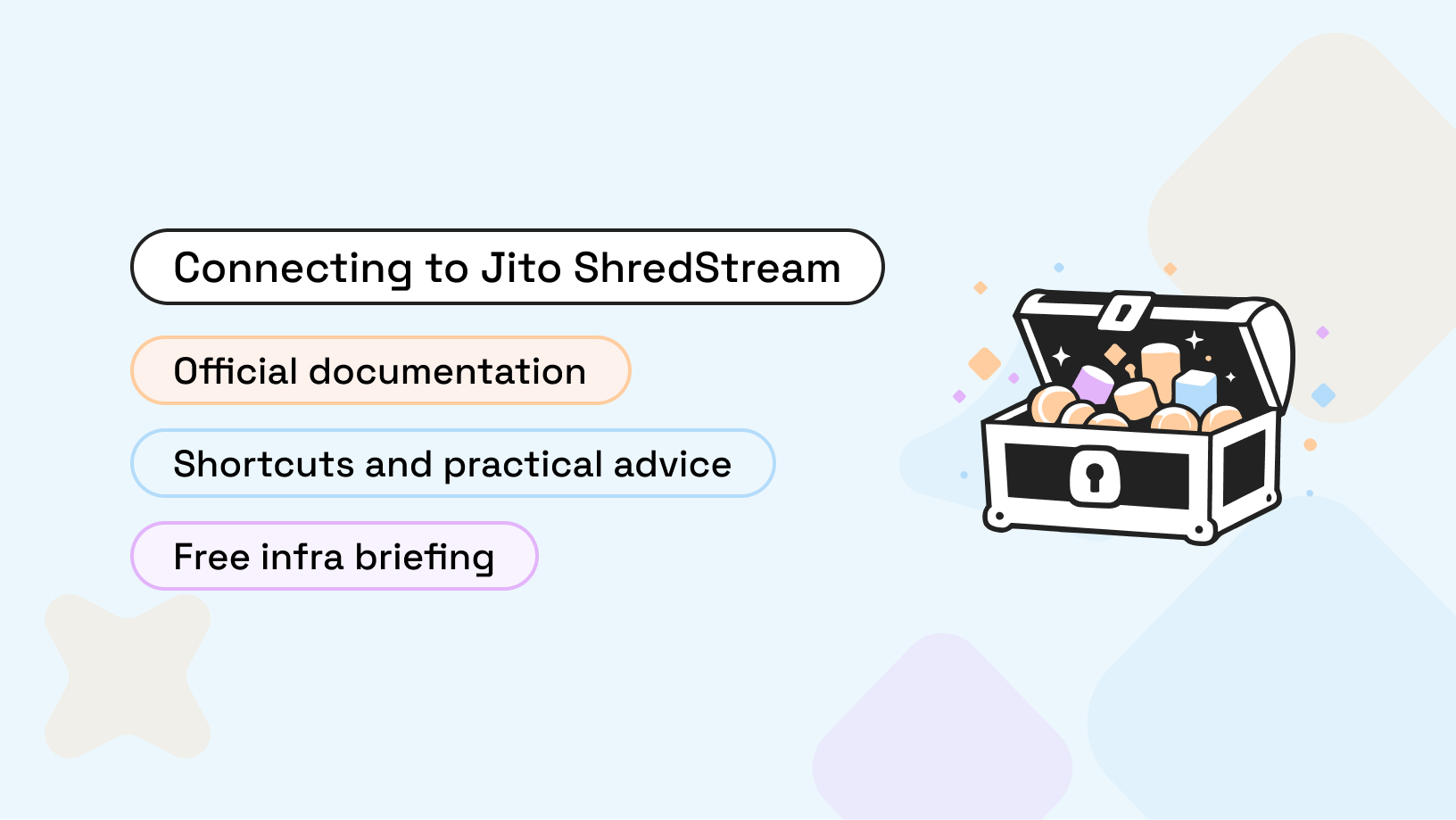
We’re happy to share another case study on the most popular Solana node infrastructure launched by RPC Fast recently. This time, our client wished to stay anonymous, so we invite you to explore the technical details of our setup, which becomes a part of the competitive advantage of the successful HFT team.
About the client
A quantitative trading firm operating in the crypto space approached RPC Fast with a clear mandate: deliver a self-hosted Solana node cluster that could guarantee high availability, low latency, and zero data loss.
Their trading stack depends on real-time, granular data from Solana DEXs, and any interruption or inconsistency in data flow directly impacts trading outcomes.
The request
The client’s in-house node infrastructure was hitting its limits. With a daily load of over 30 million RPC requests—primarily getTransaction and getSignatures—the system was prone to data gaps and downtime.
For a trading desk, even minor disruptions translate to missed opportunities and increased risk. The client needed a solution that would not only scale with their data demands but also provide operational resilience and observability.
Our approach
We architected a dual-node, self-hosted Solana cluster, designed for active-active redundancy. This setup ensures that if one node experiences issues, the other seamlessly takes over, maintaining uninterrupted data flow. The cluster is fronted by our RPC proxy, which provides a unified endpoint and intelligent request routing.
Recognizing the inefficiency of polling-based data collection at this scale, we recommended a migration to Yellowstone gRPC streaming. This shift allowed the client to consume Solana data as a real-time stream, dramatically reducing latency and system overhead.
The integration was further enhanced with support for Jito Shredstream and bloXroute’s trading API, giving the client a comprehensive, low-latency data pipeline.
Technical highlights
Let’s look closely under the hood of the Solana nodes deployment by RPC Fast for this case. The general architecture of the solution will be as follows:

The architecture employs a hybrid approach:
- Critical, high-throughput Solana nodes are deployed on bare metal servers, ensuring maximum performance and reliability.
- Meanwhile, less resource-intensive components—such as the Kubernetes control plane, monitoring systems, and log aggregation services—are hosted on public cloud instances.
This hybrid model merges the raw power of bare metal with the agility of cloud services, supporting efficient operations, secure container management through K3s (a lightweight Kubernetes distribution), and flexible, modular scaling.
To further accelerate node deployment, RPC Fast maintains a pool of pre-synced, standby Solana nodes. This proactive strategy reduces the time required to bring new nodes online from over six hours to just 15 minutes, ensuring rapid recovery and minimal downtime.
Other technical features we achieved:
- Active-active redundancy: Two Solana nodes running in parallel, with automated failover and health checks.
- Unified RPC endpoint: Our plugin abstracts node management, so the client’s trading systems interact with a single, stable URL.
- Streaming data architecture: Transition from high-frequency polling to gRPC streaming, reducing request volume and improving data freshness.
- Ecosystem integration: Seamless compatibility with advanced trading tools (Jito, bloXroute Solana Trading API) for maximum flexibility.
Results
The new architecture delivered immediate improvements. The client achieved near-100% uptime, eliminated data loss, and saw a measurable reduction in latency. The migration to streaming also cut infrastructure costs by reducing unnecessary RPC calls. Most importantly, the trading team could now focus on strategy and execution, not node maintenance.
Client perspective
The client highlighted the value of RPC Fast’s proactive support and technical guidance. Our team’s recommendations—especially around streaming and redundancy—were instrumental in achieving their operational goals.
We're very satisfied with Dysnix's service. Their support has been excellent—super easy to deal with and requiring minimal time investment on our part. One particularly valuable aspect has been their proactive recommendations for optimizing our systems, such as the suggestion to move to gRPC streaming.
The node performance has been great, especially compared to the numerous issues we experienced with our previous in-house node setup. The stability and reliability of Dysnix's nodes have met our expectations for trading operations.
The onboarding process was straightforward, and ongoing support has required minimal client-side effort.
Fine nodes—fine trades
For trading companies, where milliseconds and data integrity matter, infrastructure is not just plumbing—it’s a competitive edge. By partnering with RPC Fast, this client now operates on a resilient, future-proof Solana data backbone, ready to scale with market demands.



















.svg)
.svg)
.svg)

